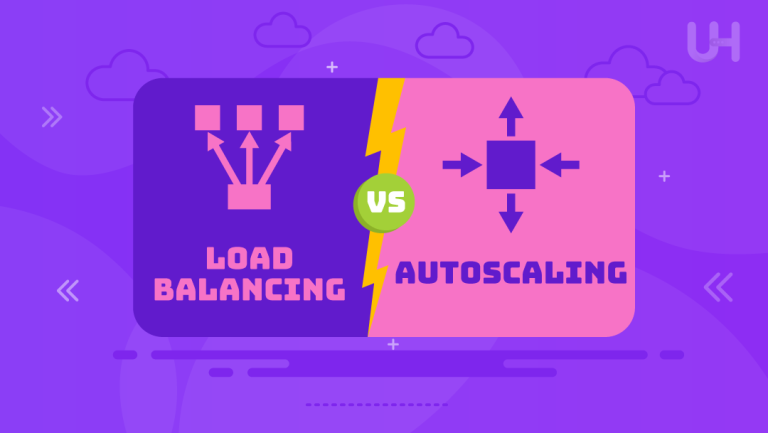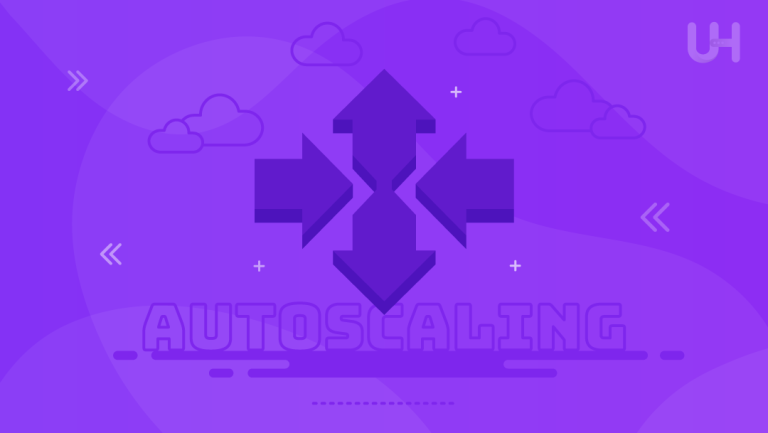As organizations grow, so do the demands on their infrastructure, and in the case of applications and platforms, this rests on server performance. When increased loads need handling, scaling servers efficiently is paramount to ensure seamless performance without sacrificing speed or reliability. There are mainly two kinds of commonly used scaling approaches: horizontal vs vertical scaling. Understanding the difference between horizontal and vertical scaling will help an organization make the right choice.
In this article, we will examine all the features of horizontal vs vertical scaling, from how each functions to their respective merits and limitations and real-world use cases. By breaking down the advantages and drawbacks of each, this article will help you better decide which scaling strategy might suit your business.
What is Server Scaling?
Scaling a server is the process of increasing its capacity to hold growing data, user demand, and workload. As companies continue to increase in size and digital traffic, one server becomes insufficient to bear the increased demands, which may eventually lead to downtimes or declines in performance. Scaling servers means adding more resources to the dedicated web server through hardware or software or building the infrastructure to increase application or service performance and reliability.
Why Is It Important?
Scaling a server infrastructure becomes indispensable because a well-scaled server infrastructure maintains smooth performance, particularly during periods of heavy workload. This minimizes the possibility of downtimes and lags, thereby protecting user experience and productivity and facilitating business growth. Scaling a server infrastructure optimizes resource usage and increases cost-effectiveness due to reduced or eliminated expenses used in upgrading outdated systems.
How Does Server Scaling Work?
Scaling of servers basically takes place in two key ways: horizontal scaling, where more servers combine to share the workload, and vertical scaling, which focuses on increasing the power and capacity of the already existing fast server. Horizontal scaling, also referred to as “scaling out,” distributes the load across multiple machines. This generally can keep uptimes and resiliency consistent. Vertical scaling, in contrast, also known as “scaling up,” enhances the capability of one server by adding resources like higher CPU, memory, or storage.
Both scaling methodologies require server architectures and applications to be designed to support scaling. In general, horizontal scaling uses load balancers to distribute traffic, while vertical scaling may rely on downtime to accommodate new hardware. Current cloud providers support both directions, enabling an enterprise to realize either horizontal or vertical scaling depending on its existing infrastructure and future increases.
What is Horizontal Scaling?
Horizontal scaling is a strategy for scaling servers by adding more nodes or servers to a network to distribute and handle increasing workloads. Instead of upgrading the hardware of a single server, horizontal scaling multiplies instances of servers. This way, each of them shares the load, thereby decreasing the burden on individual machines. In applications that demand high availability and resiliency, this strategy avoids single points of failure.
Because horizontal scaling allows for flexibility, it is very common for cloud-based applications and services. Businesses can achieve this by adding server instances only when demand goes up, making it cost-effective and scalable. This kind of scalability further enables companies to respond effectively to seasonal peaks, spikes in traffic, or sudden increases in user loads without any deficit in overall performance.
Advantages
- High fault tolerance: Spreads the workload across multiple servers, reducing the impact of any single server’s failure.
- Elasticity and flexibility: Can easily add or remove servers as needed, adapting to changing demand.
- Better suited for high availability: Supports applications that must be consistently accessible, such as cloud and web applications.
- Improved load distribution: Distributes processing power across many servers, enhancing response time during high usage periods.
Disadvantages
- Complex setup and maintenance: Requires robust load balancing and complex network configurations.
- Higher operational costs: Running multiple servers increases power, cooling, and physical space costs.
- Potential for data inconsistency: Requires data synchronization across servers, which can lead to inconsistencies in distributed systems.
Examples
- Content delivery networks (CDNs): Horizontal scaling helps distribute web content across global servers for faster delivery.
- E-commerce platforms: Major platforms use horizontal scaling to handle high traffic and transaction volumes.
- Microservices architecture: Scales individual services independently to meet application demands.
What is Vertical Scaling?
Scaling, normally referred to as “scaling up,” is a methodology performed vertically. This kind of scaling focuses on increasing the capacity of a single server through additional processing power, memory, or storage. Vertical scaling leverages existing infrastructure rather than deploying multiple servers by upgrading hardware within one machine. In this approach, performance improvement for a system will be very easy without involving complex management of many servers.
This usually involves very few changes to the server’s architecture, making it practical in businesses with considerably small workloads. However, there are intrinsic limits to vertical scaling since servers have maximum capabilities related to upgradability. A point will eventually be reached during vertical scaling when it is no longer fairly viable or effective because of further hardware upgrades.
Advantages
- Simpler implementation: Requires less architectural complexity and no load balancing configuration.
- Lower latency: Since all resources are contained within one machine, there is no need for network communication between servers.
- Reduced management overhead: Only one server to manage, leading to simpler system administration.
- Quick to deploy: Ideal for businesses looking to increase capacity without redesigning infrastructure.
Disadvantages
- Limited by hardware constraints: Server upgrades have a cap, making scaling up no longer viable.
- Downtime risk: Some upgrades require system downtime, which can impact operations.
- Single point of failure: If the server fails, it affects the entire system, making vertical scaling less resilient.
Examples
- Enterprise databases: Many small- to medium-sized businesses use vertical scaling for databases where a single server is sufficient.
- Standalone applications: Apps with limited user interaction or low data processing needs.
- Legacy systems: Older applications designed for single-server environments often rely on vertical scaling.
Similarities Between Horizontal and Vertical Scaling

While horizontal and vertical scaling are two very different ways to approach scalability, they possess the common goal of offering increased processing capability and, consequently, better performance from server infrastructures. Below is a closer look at the common advantages of both:
Enhance Processing and Storage
Both horizontal and vertical scaling enhance the processing power and storage capacity to meet the increasing demand. As the volume of data increases and the applications’ needs become increasingly complex, it is rather easy for the systems to address the increased workloads using these scaling strategies. This approach helps the system deal with high workloads and efficiently store more extended data sets, whether by adding nodes or upgrading server components.
Improve Business Capabilities
As a result, both scaling methods allow businesses to scale up their operations and enhance the quality of services by increasing the capacity and performance of their systems. The infrastructure, when scaled, allows organizations to handle a larger number of users and serve them efficiently. With increased capabilities, businesses can now try to take advantage of new opportunities and adapt to changes in the market, keeping them competitive and operationally resilient.
Increase Flexibility
In this regard, horizontal and vertical scaling allow companies flexibility in adjusting to demand fluctuation. Horizontal scaling allows distributed scalability, which is ideal for handling unpredictable workloads, while vertical scaling provides straightforward upgrades to existing hardware. This flexibility enables scaling up and out according to business needs to optimize resources without adversely affecting performance or disrupting operations.
Reduce Response Time
Both scaling methods reduce the response time, improving the user experience and operational efficiency. Horizontal scaling does this because a larger number of loaded servers requires less work from each server, while vertical scaling achieves this by increasing response time with fully dedicated servers. Reduced latency, hence, makes for a speedier application on the part of the user and smoother processes on behalf of businesses in case of increased productivity.
Encourage Innovation
Scaling up or out infrastructure lets organizations innovate, not being held by the bonds of capacity or performance. Knowing their infrastructure is stable, companies will look to deploy new technologies and advanced applications and enhance services without any risk due to performance. This enables the ability to try new things, creating greater growth in agility and an advantage over other competitive markets.
Maximize Cost-effectiveness and Profitability
Both of these scaling methodologies will allow an organization to reach an optimized cost by scaling to meet needs. Horizontal scaling avoids large upfront investments by adding capacity gradually, while vertical scaling utilizes current infrastructure bound before considerable investments are in need. The correct choice of scaling will enable a business to achieve much higher profitability because of lower infrastructure costs, higher performance, and closer alignment with business objectives.
Power Your Scaling Needs with Fast Servers!
Looking for the perfect server solution to support your scaling strategy? UltaHost’s Fast 10Gbps Dedicated Servers offer the speed, reliability, and flexibility you need for seamless horizontal or vertical scaling.
Differences Between Vertical vs Horizontal Scaling
Although both scaling methods aim to enhance server performance, they differ in their approaches. Here is a detailed comparison of key differences between the two:
| Factor | Horizontal Scaling | Vertical Scaling |
| Scalability Method | Increases capacity by adding more servers (nodes) to the system, distributing the workload across multiple machines. | Increases capacity by upgrading the hardware resources (CPU, RAM, storage) of a single server. |
| Cost Structure | Can be more cost-effective for long-term scaling as new nodes can be added gradually based on demand. | Often less expensive initially but can become cost-prohibitive as hardware upgrades approach physical and technological limits. |
| Implementation Complexity | Requires managing and configuring multiple servers, often needing load balancing and network configuration adjustments. | Generally simpler to implement as it focuses on a single server, requiring fewer changes to the application infrastructure. |
| Infrastructure Flexibility | Offers flexibility to add or remove servers based on workload, ideal for scaling in environments with fluctuating demand. | Limited flexibility as it depends on the upgradability of a single machine, which may eventually reach maximum capacity. |
| Data Consistency and Synchronization | Requires careful handling of data consistency across multiple servers, which can add complexity to database operations. | Simpler data handling as all processes run on one server, reducing the need for complex data synchronization between multiple nodes. |
| Risk of Single Point of Failure | Low risk, as multiple servers ensure redundancy; failure of one node usually has minimal impact on the overall system performance. | Higher risk, as reliance on a single server can cause significant downtime if the server fails, affecting overall system availability. |
| Management and Maintenance | Requires managing multiple servers, often increasing operational complexity and maintenance needs. | Easier to manage as it involves a single server, reducing maintenance effort but increasing dependency on one machine’s health. |
| Speed of Scaling | Scaling can happen quickly by adding additional nodes, especially in cloud environments where servers can be deployed almost instantaneously. | Typically slower, as hardware upgrades need to be installed manually and might require system downtime to add CPU, RAM, or storage. |
| Long-term Scalability | Highly scalable in the long run as additional nodes can continue to be added to support growing demand indefinitely. | Limited scalability in the long term, as a single server can only be upgraded to a certain extent before hitting physical constraints. |
| Resource Utilization | Distributes resources across multiple servers, making it efficient for handling large-scale applications with high demands. | Utilizes the maximum potential of a single server, potentially leading to higher efficiency in environments with predictable demands. |
Factors To Choose Between Horizontal vs Vertical Scaling
The following are some factors to consider when choosing between horizontal vs vertical scaling. These will help you decide which approach best meets an organization’s requirements.
Budgetary Constraints
The version of scalability is highly dependent on the budget. Scaling vertically is cheaper in the short run, especially for startups that don’t have many resources because it uses already-set infrastructure. But horizontal scaling does tend to result in much more predictable costs over time since firms can add nodes incrementally depending on demand and thus are more budget-friendly in the long run.
Future Growth Projections
The deciding factors between scaling types are future growth expectations. Horizontal scaling would, therefore, be ideal for businesses expecting sudden spurts in growth or seasonal spikes in demand, whereby seamless growth without an overhaul of the infrastructure would be possible. Vertical scaling may be practical for businesses experiencing steady growth, where an upgrade of the servers at hand can meet the demands of growth without any additional infrastructure.
Application Architecture and Compatibility
The type of scaling strongly depends on an application’s architecture. Applications designed for a distributed environment benefit more from horizontal scaling, allowing their loads to distribute across several nodes. On the other hand, applications operating on a single server and with low traffic would benefit more from vertical scaling. This is because periodic hardware upgrades would result in adequate performance without a complex server network.
Performance and Latency Requirements
The performance and network latency requirements are important in selecting the scaling approach. Since applications with low, real-time latency and high-speed performance are demanded, vertical scaling is generally used since there is no network delay between servers. Although horizontal scaling improves resilience, data needs to move between nodes, which might, to some extent, introduce a delay that may affect latency-sensitive applications.
Resilience and Fault Tolerance Needs
Resilience and fault tolerance are important considerations, particularly for highly available applications. Horizontal scaling provides great fault tolerance in that workloads are distributed among various servers, each having less impact from single points of failure. Vertical scaling has limited fault tolerance since it relies on one machine. If it happens to fail, it may affect the entire operation, thus being less resilient for an enterprise mission-critical application.
Use Cases For Horizontal Scaling vs Vertical Scaling
Both horizontal and vertical scaling have distinct use cases, depending on the application’s requirements.
Horizontal Scaling
- Ideal for large web applications with high traffic.
- Suitable for distributed storage solutions and data-intensive applications.
- Used in cloud services for on-demand resource scaling.
Vertical Scaling
- Fits well with single-server applications with moderate load requirements.
- Suitable for small to medium-sized database servers.
- Common for legacy applications where horizontal scaling integration is challenging.
Conclusion
When choosing between horizontal or vertical scaling, businesses need to evaluate their specific requirements, application architecture, and growth forecasts. Both have different advantages in scaling and can further improve performance, resilience, and flexibility accordingly. Therefore, while vertical scaling is a more cost-effective approach for smaller applications, horizontal scaling provides the robustness necessary for larger and distributed systems. With due care, organizations will be able to apply the right strategy for scaling with high performance and growth.
UltaHost’s Cloudflare hosting server provides enhanced security and speed for effective horizontal and vertical scaling. With UltaHost, you can ensure seamless scalability while optimizing your infrastructure.
FAQ
What’s the key difference between horizontal and vertical scaling?
Horizontal scaling adds more servers to handle increased demand, while vertical scaling upgrades the power of a single server.
Which scaling is more cost-effective?
Horizontal scaling is generally more cost-effective for long-term, large-scale needs, while vertical scaling is often cheaper for short-term requirements or smaller workloads.
How does horizontal scaling boost fault tolerance?
By spreading workloads, horizontal scaling minimizes risk if one server fails.
When is vertical scaling preferable?
Vertical scaling is best for predictable workloads or when quick upgrades are needed.
What challenges come with horizontal scaling?
Horizontal scaling often requires complex network configurations, load balancing, and synchronization across servers, which can increase setup and maintenance costs.
Can vertical scaling support growth indefinitely?
No, eventually, hardware limits require a shift to horizontal scaling.
Is one scaling method better than the other?
No, the best method depends on business needs, workload patterns, budget, and infrastructure; often, a mix of both scaling types offers the most flexibility and efficiency.















